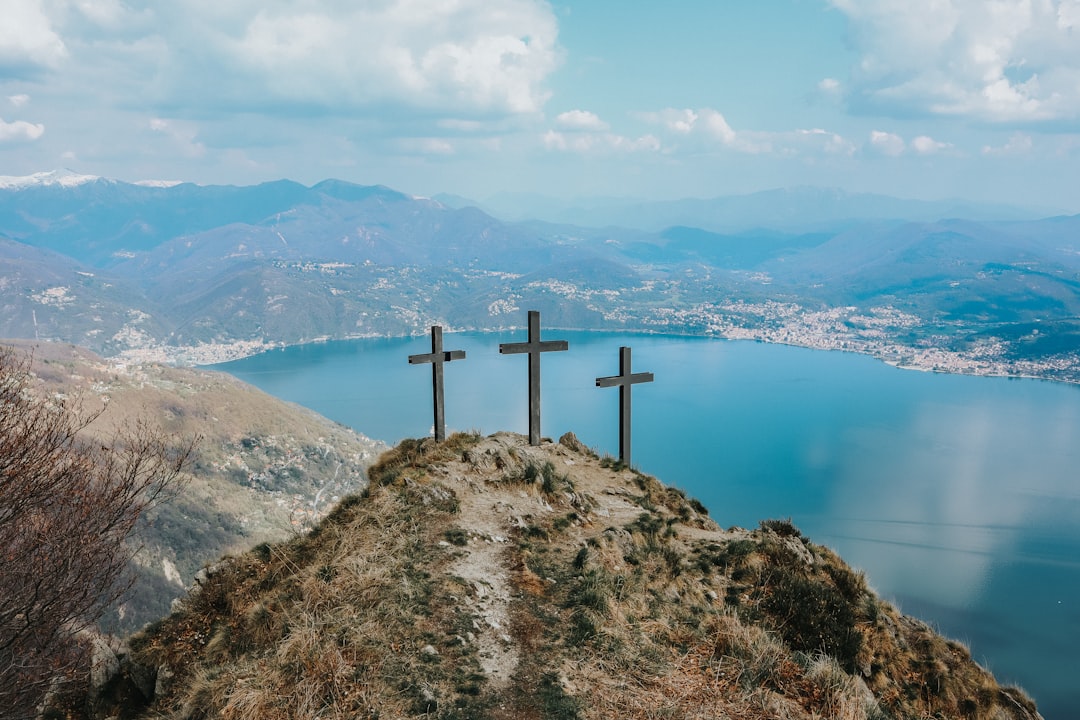On the Right and On the Left
Two unlikely men found themselves on each side of Jesus as he hung on the cross
They crucified two rebels with him,
one on his right and one on his left.
—Mark 15:27
Earlier in his gospel, Marks tells the story of James and John, the sons of Zebedee. “Teacher,” they said to Jesus, “we want you to do for us whatever we ask” (Mk 10:35). My initial reaction is, “Come on, guys, stop being so childish! You know better than that!” And then I am quickly reminded of how often my prayers are precisely like that, though I never say those exact words.
“Lord, please help me…please be with me…”
And then it doesn’t take long before my words devolve into:
“Lord, I need this…do this for me…bless my plan…give me good things…” and so on.
Continuing in Mark 10:36-45 (paraphrased):
“What do you want me to do for you?" Jesus asked.
“We want to be the ones to sit at your right and left hand in glory. Come on! Whaddaya say?” they respond with great enthusiasm.
“You have no idea what you are asking for,” Jesus says. “Are you ready to drink the cup I will drink or be baptized as I will be?”
“Absolutely!” Of course, neither James nor John knew that Jesus was talking about a cup of suffering or a baptism of death.
“Well,” Jesus continued, “you will drink this cup, and you will be baptized with this same baptism, but sitting at my right or left hand? That’s not for me to decide. These places belong to those who are being prepared for those places.”
Later, when talking with all of the disciples, Jesus said, “Whoever wants to become great must become a servant, and whoever wants to be first must become a slave to everyone. Even the Son of Man did not come to be served, but to serve, and to give his life for a ransom for many.”
Jesus came to live among humanity; the same humanity that, time after time turns its back on him. Moving quickly forward to the cross, this same Jesus who ate with sinners and tax collectors, who touched the sick, spoke kindly to the lowest people in society, and wept over the masses of people who were like sheep without a shepherd, is now hanging on the cross between two men.
Jesus fits into the first category of showing chutzpah on behalf of others, like Abraham, David, and Moses. He pleaded for God’s mercy on the perpetrators of his crucifixion, because “they do not know what they are doing.”
Lois Tverberg, “Dust of the Rabbi” (Kindle 1994)
Who are these men at his right and left hand? It’s not James, and it’s not John. It’s not any of the disciples, for they have all fled. Jesus hangs on the cross between two rebels, criminals who “heaped insults on him” and everyone else. The irony of the situation, compared to the earlier scene with James and John, cannot be ignored.
In Mark’s simple picture of the crucifixion, we see that Jesus not only died for humanity, but he also died with humanity and as a part of humanity. Those two nameless figures crucified on the right and left of Jesus represent me, you, and every man, woman, boy, and girl on the planet. We are the sinners, the outsiders, and the ones in need of forgiveness.
[This story is an excerpt from Mark’s Unfinished Story]



